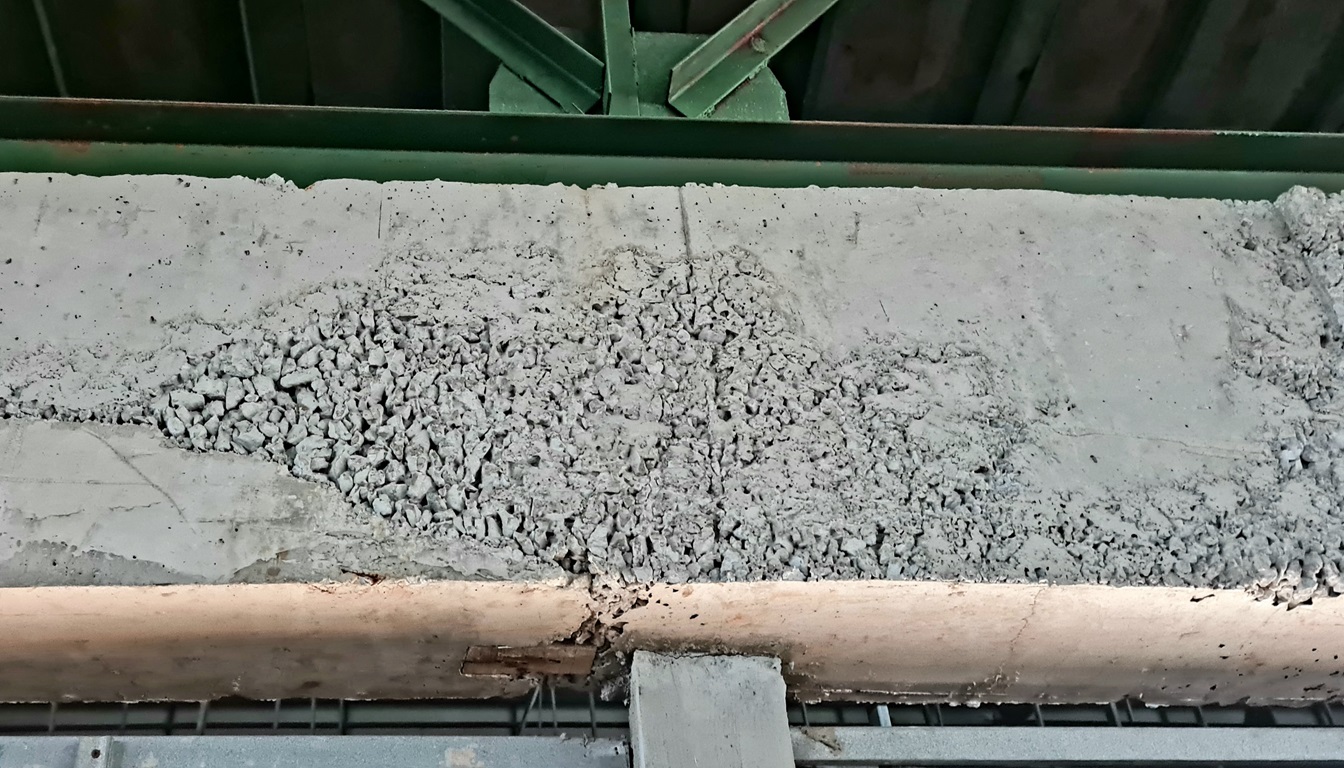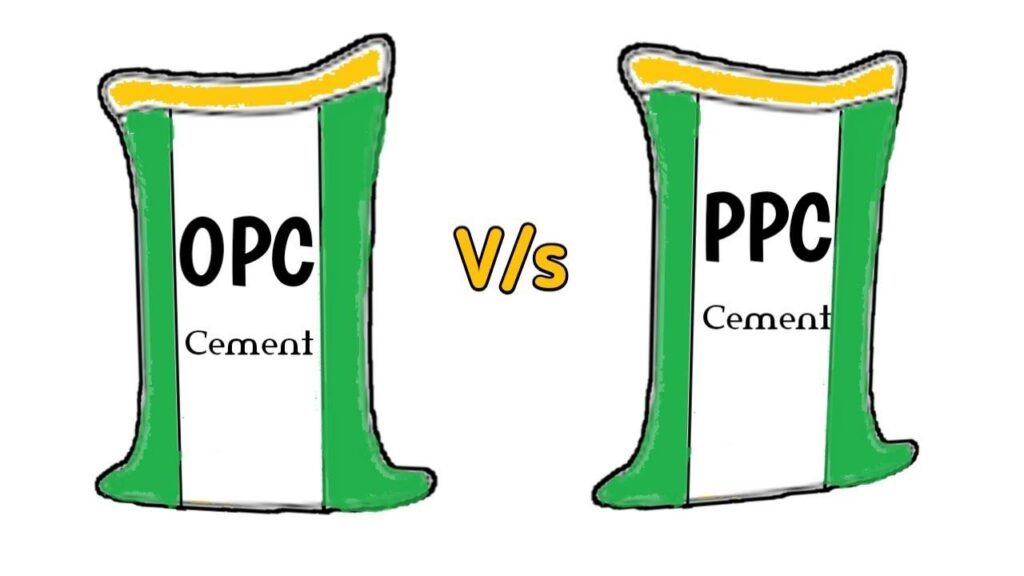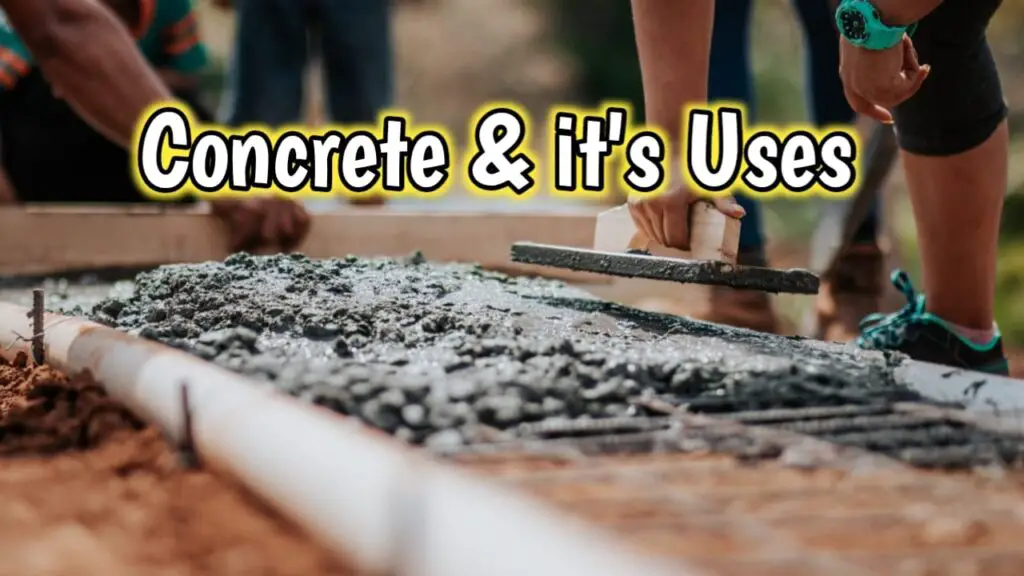Concrete is an essential component of modern construction, used in everything from sidewalks to skyscrapers. However, not all concrete is created equal, and one common issue that can arise is segregation. Segregation in concrete refers to the separation of different components of the mixture, leading to concrete that is weakened, less durable, and potentially dangerous. There are numerous types of segregation, each with its causes and effects, but fortunately, there are practical steps that can be taken to prevent it from occurring.

Key Takeaways:
- Segregation in concrete can lead to weakened, less durable, and potentially dangerous structures.
- There are various types of segregation, including separation of aggregates and cement slurry.
- Causes of segregation include issues with mixing, handling, and placement of the concrete mixture.
- Methods to prevent segregation include proper mixture design, sufficient mixing time, and careful handling and placement.
- Regular inspection and maintenance are also essential in preventing segregation issues over time.
Understanding Concrete Segregation
To put it simply, segregation in concrete means the separation of its different components. This can happen when concrete is being placed, transported, or compacted. It is a common issue that can compromise the quality and durability of concrete structures, making it essential to understand and prevent.
The significance of segregation in concrete is clear. If the aggregate particles and cement paste separate, the concrete mix won’t achieve the intended strength and durability, and this can lead to structural problems. This is why preventing segregation is vital in ensuring the integrity of concrete structures.

The above image depicts a common example of how concrete segregation manifests. The heavier aggregate particles have sunk to the bottom, while the lighter cement paste is on top. This is a clear sign of segregation in concrete, and it can result in reduced strength and durability of the structure.
Types of Segregation in Concrete
When it comes to concrete, segregation is not a one-size-fits-all problem. Different types of segregation can occur, each with its unique causes and effects. In this section, we will discuss two common types of segregation in concrete: segregation due to the separation of aggregates and segregation due to the separation of cement slurry.
Segregation due to Separation of Aggregates
Aggregates are essential components of concrete, comprising coarse and fine particles such as gravel and sand. When segregation occurs due to the separation of aggregates, it can affect both the workability and strength of concrete. This type of segregation is commonly seen in concrete with a high proportion of larger particles, such as in high-strength concrete, and can lead to a non-uniform mixture.
If the concrete mix is not well-designed and blended, then the heavier stones may settle in the bottom layer under the lighter ones, resulting in segregation. The aggregate separation can increase the water-cement ratio in the top layer, reducing the durability of the concrete, and leaving behind a weak and unstable structure.
Segregation due to Separation of Cement Slurry
Another common type of segregation in concrete is due to the separation of cement slurry, which comprises water and cement. If the mixture is not designed correctly or if too much water is added, heavier cement particles can settle, while lighter water particles rise to the top. This type of segregation can significantly impact the strength and durability of concrete.
Segregation due to the separation of cement slurry can also occur during the transportation of the concrete mix. If the concrete mix is handled roughly during transport, the cement can separate from the water, leading to increased porosity, reduced strength, and lower durability.

Overall, understanding the types of segregation that can occur in concrete is vital to ensure the structural integrity of concrete structures. In the next section, we will explore the causes of segregation and how to prevent it.
Causes of Segregation in Concrete
Segregation in concrete can occur due to various factors that cause the separation of the cement paste and aggregates, leading to an uneven mixture of concrete. Here are the five common causes of segregation in concrete:
- The uneven proportion of concrete ingredients: The lack of uniformity in the mixture proportions, such as aggregates, cement, water, and admixtures, can result in a non-homogeneous mixture.
- Insufficient mixing time of concrete: Inadequate mixing time of the concrete can cause incomplete blending of the ingredients, leading to clustering and separation of the aggregates and cement paste.
- Handling of the concrete mix: Improper handling of the concrete mix during transportation and placement can cause segregation due to the use of unsuitable tools, rough movement of the mix, and excessive vibration.
- Placing of concrete mix: The method of placing concrete mix can also cause segregation, especially if the free fall distance is long, or the consolidation is insufficient.
- Settlement: During transportation, the heavy aggregates may settle at the bottom of the concrete mix causing a non-uniform mix.
Identifying these factors and addressing them properly can minimize segregation issues. The following table provides a breakdown of these causes:

“By understanding the issues that lead to segregation in concrete, we can take the necessary steps to ensure a homogeneous mixture and prevent structural problems in concrete structures.”
Effects of Segregation in Concrete
Segregation in concrete can have significant adverse effects on the quality and durability of concrete structures. When the different components of concrete, like cement, aggregates, and water, separate from each other, the strength of concrete reduces, making it more susceptible to damage and collapse.
One of the most noticeable effects of segregation is the formation of voids or honeycombs in concrete, which become weak spots and further exacerbate the risk of structural issues and collapse. The separated particles due to segregation also create a non-uniform mixture, making it challenging to achieve the desired consistency and workability of the concrete.
To illustrate the impact of segregation more explicitly, let’s look at how it affects specific properties of concrete:

| Properties of Concrete | Effects of Segregation |
|---|---|
| Strength | Reduces the compressive, tensile, and flexural strength of concrete by up to 20-50% |
| Durability | Reduces the life cycle of concrete structures by increasing the risk of corrosion, cracking, and spalling |
| Workability | Makes the mixture non-uniform, affecting its consistency and making it challenging to achieve the desired workability |
| Surface Finish | Results in honeycombs, voids, and rough surfaces, compromising the overall aesthetic appeal of the structure |
It’s crucial to address segregation in concrete during the design and construction phase itself to avoid potential problems in the future. Prevention measures, such as proper mixture design, adequate mixing time, and careful handling of the concrete mix, can significantly reduce the risk of segregation and ensure the structural integrity of concrete structures.
Methods to Reduce Segregation in Concrete
Segregation in concrete can cause damage to structures if not prevented or minimized. Here are six effective methods to reduce segregation in concrete:
| Method | Description |
|---|---|
| Proper Mixture Design | Creating a concrete mix with a balanced aggregate grading, appropriate water-cement ratio, and suitable admixtures. |
| Sufficient Mixing Time | Mixing concrete for a sufficient amount of time to ensure even distribution of the ingredients. |
| Careful Handling of Concrete Mix | Using proper equipment and techniques to handle and transport the concrete mix without causing segregation. |
| Precise Placement of Concrete Mix | Correctly placing the concrete mix without allowing it to free-fall or segregate during consolidation. |
| Vibration | I am using vibration to consolidate the concrete mix and reduce the risk of segregation. |
| Regular Inspection and Maintenance | Conducting regular inspections and maintenance to identify and address any signs of segregation early on. |
By following these methods, you can significantly reduce the risk of segregation in concrete, ensuring the durability and longevity of concrete structures.

Proper Mixture Design
One of the most critical factors in preventing segregation in concrete is proper mixture design. Achieving a homogeneous mixture that is consistent throughout enables the concrete to maintain its structural integrity and strength. To achieve a proper mixture design, several factors should be considered.
Aggregate grading
The first factor to consider is the grading of the aggregate, which should be uniform. This ensures that all components of the concrete mix are well-distributed, preventing the separation of heavier and lighter materials. By achieving a consistently sized aggregate, the mixture becomes dense and less prone to segregation.
Water-cement ratio
The second factor to consider is the water-cement ratio. Maintaining a low water-cement ratio ensures a cohesive mixture that is less likely to separate. Adequate hydration helps to create a strong bond between the aggregate and the cement, leading to a more durable concrete structure.
Admixtures
The third factor to consider is the use of admixtures, which can improve the workability of the mixture. These can be adding plasticizers and superplasticizers to reduce the water-cement ratio, which results in a more cohesive mixture and reduces the risk of segregation.
By considering and implementing these mixture design factors, it is possible to achieve a concrete mixture that is less susceptible to segregation. Proper mixture design creates a cohesive and well-distributed mixture, which contributes to a more durable and long-lasting concrete structure.

Sufficient Mixing Time
Proper mixing is crucial to ensure a homogeneous concrete mixture and reduce segregation. Sufficient mixing time is a key factor in achieving this, allowing for the uniform distribution of aggregates, cement, and water.
Typically, concrete should be mixed for at least two minutes at the mixing speed recommended by the manufacturer. However, the specific mixing time may vary depending on factors such as the type of mixer and the size of the concrete batch.
Inadequate mixing time can result in clusters of aggregates and uneven distribution of cement, leading to the separation of components and ultimately causing segregation. Therefore, it is essential to closely monitor the mixing process and ensure that sufficient mixing time is achieved.

Moreover, it’s important to consider the sequence in which the different ingredients are added during mixing. For instance, the aggregates should be added first, followed by the cement and water. This order helps to ensure the proper coating of aggregates and minimize the risk of segregation.
Investing in a high-quality mixer, monitoring mixing time, and considering the sequencing of ingredients can all significantly reduce the risk of segregation due to inadequate mixing.
Careful Handling of Concrete Mix
SEO relevant keywords: handling of concrete mix
One key factor in preventing the segregation of concrete is careful handling during transport and placement. Proper handling ensures that the integrity of the mixture is maintained, reducing the risk of separation.
It is essential to use the right equipment and techniques during the process. Workers should be trained in proper handling techniques to avoid any mistakes that could lead to segregation.
For instance, when moving the concrete mix, it is crucial to keep it as uniform as possible. Avoid any sudden movements or jolts that can cause the mix to separate. Even vibrations from heavy machinery or transport vehicles can cause segregation, so it’s essential to minimize these as much as possible.
When placing the concrete, it’s important to spread it evenly and avoid any free-falling, which can also cause separation. Instead, use chutes or tubes to carefully deposit the mixture in its desired location.

It’s also important to ensure that the concrete is consolidated properly, removing any air pockets within the mixture. This can be achieved by using vibrators or tamping equipment, which helps to promote the bonding between different components of the mixture, further reducing the risk of segregation.
Precise Placement of Concrete Mix
When it comes to preventing segregation, the placement of concrete mix is a key factor that should not be overlooked. Appropriate placement techniques can ensure that the mixture is evenly distributed and consolidated, resulting in a more homogeneous structure.
Avoiding free fall during the placement process is crucial in preventing segregation. Concrete should be placed as close to its final position as possible, using drop chutes or other necessary equipment. Additionally, the concrete mix should be placed in layers, with each layer adequately consolidated before adding the next one. This prevents the separation of aggregates and cement slurry, ensuring uniformity in the structure.
It is important to note that the placement method used will depend on the type and size of the structure being constructed. However, regardless of the placement technique used, ensuring precise placement is critical in preventing segregation and maintaining the structural integrity of concrete.

Expert Insight: Proper Placement Techniques
“Proper placement of concrete mix starts with proper planning. You must have experienced professionals who understand the nature of the mix and can identify the best approach. Concrete should be placed in a continuous operation, with a clear order of placement and accurate timing. It helps prevent a cold joint and promotes consolidation of the mix.”
Other Prevention Measures
Aside from the prevention methods discussed earlier, other measures can also help to reduce the risk of segregation in concrete.
Vibration
Vibration is an effective technique that can help eliminate air pockets and promote proper compaction of the concrete mix. By vibrating the concrete, the different components mix more uniformly, ensuring proper integration and minimizing the risk of segregation.
Proper curing techniques
Proper curing techniques, such as maintaining adequate moisture levels and temperature, play a significant role in preventing segregation. Proper curing ensures optimal conditions for the hydration process, allowing the concrete to develop the required strength and durability over time.
Quality Control Measures
Quality control measures, including regular testing of the concrete mixture, can help to identify any issues early on and prevent segregation problems. By conducting frequent tests and inspections, any potential issues can be detected and resolved before they become more severe.
By utilizing these additional prevention measures, concrete structures can be built with greater durability and strength. Employing these techniques can reduce the risk of segregation, ensuring the mixture stays uniform and well-integrated for years to come.

Regular Inspection and Maintenance
To prevent segregation issues over the lifespan of concrete structures, regular inspection and maintenance are crucial. By identifying and addressing any signs of segregation early on, further complications can be avoided, saving time and money in the long run.
Inspection should be conducted regularly, at least once every year, and preferably more often for larger or more critical structures. This can be done through visual observation or more specialized testing methods, depending on the extent of segregation and the nature of the structure. Any signs of segregation, such as visible color differences, should be addressed immediately.
Maintenance can involve a variety of tasks, depending on the specific needs of the structure. This can include crack repair, joint sealing, and surface protection, among others. In addition, any relevant repairs or upgrades should also be conducted during maintenance periods, such as reinforcing steel or installing waterproofing measures.
Regular inspection and maintenance not only help to prevent segregation issues but also promote overall structural health and longevity. By taking proactive measures, concrete structures can continue to perform as intended and provide safe and reliable usage for years to come.

Conclusion
Segregation in concrete can have severe consequences on the structural integrity and overall performance of concrete structures. This article has explored the different types and causes of segregation, as well as the effects it can have. Additionally, we have highlighted various preventions that can be implemented to avoid segregation issues.
It is essential to ensure the proper mixture design, sufficient mixing time, careful handling, and precise placement of concrete mix, to name a few factors that can significantly reduce the risk of segregation. Other prevention measures, such as vibration, proper curing, and regular inspection and maintenance, can also help maintain the integrity of concrete structures.
By taking the necessary precautions and implementing the preventions discussed in this article, we can ensure that concrete structures remain strong and durable, avoiding segregation problems that may arise in the future.
Thanks For the Great Attention!
Good Bye & Take Care
Happy Learning
Also, Read,



